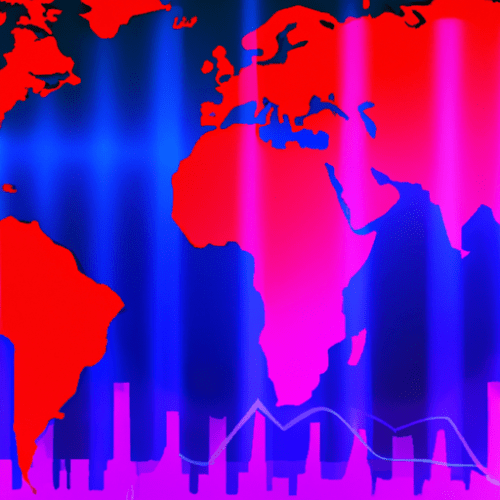
Understanding Poverty in Mozambique: Numbers, Regions, and Risk Factors
Introduction
Mozambique, a country located in Southeast Africa, has a population of over 32 million people, rich natural resources, and a vibrant culture. Despite its potential and years of economic growth, Mozambique faces daunting poverty challenges that affect millions of its citizens. This post delves into the most recent poverty statistics in Mozambique, highlighting its regional disparities and the complex risk factors contributing to the poverty cycle. Whether you are a policymaker, researcher, or global citizen, understanding Mozambique’s poverty profile is crucial in working toward effective solutions.
In this article, we will explore the latest poverty data for Mozambique, breakdown poverty by region, and analyze the key risk factors that keep communities in persistent deprivation. Our goal is to paint a comprehensive picture with actionable insights, based on up-to-date data and scholarly research.
Main Research: Poverty Numbers in Mozambique
1. Mozambique’s National Poverty Rate: The Big Picture
Official statistics provided by Mozambique’s National Institute of Statistics (INE) and international agencies show that, as of 2022, approximately 60% of Mozambicans live below the national poverty line. This is actually an improvement from previous decades, yet it remains among the highest rates in the region.
According to the World Bank, “extreme poverty”—defined as living on less than $2.15 per day (2022 PPP)—affects about 46% of the population as of 2022. This means nearly one out of every two Mozambicans struggles to cover basic food, shelter, and healthcare expenses. Poverty is a stubborn reality, with only modest declines over the past ten years, despite economic growth largely driven by natural gas and agricultural exports.
2. Regional Disparities: Where Is Poverty Most Prescient?
While the national average is stark, poverty is not distributed evenly across Mozambique. The country is divided into 11 provinces, and poverty data shows significant regional differences:
- Central and Northern provinces (such as Cabo Delgado, Nampula, Zambezia, Niassa, and Tete) experience the highest levels of poverty. In provinces like Zambezia and Cabo Delgado, up to 70% of the population lives below the poverty line.
- Southern provinces (notably Maputo City and Maputo Province) report much lower poverty rates, with less than 20% of residents considered poor by national standards.
This urban-rural divide is especially pronounced. In rural Mozambique, the poverty rate hovers around 70%, while in urban centers it’s approximately 30%. The trajectory of poverty reduction over the last decade suggests most gains are concentrated in urban provinces and among more developed southern regions.
The following table summarizes poverty rates by selected provinces (source: INE and World Bank, 2022):
| Province | Poverty Rate (%) | Population Affected |
|---|---|---|
| Zambezia | 72 | 3.4 million |
| Nampula | 68 | 3.1 million |
| Cabo Delgado | 70 | 2.0 million |
| Maputo City | 18 | 0.5 million |
The North’s vulnerability is worsened by recent insurgencies and flooding, pushing progress even further behind.
3. Risk Factors Driving Poverty in Mozambique
Several interlocking risk factors explain why Mozambique’s poverty remains so high, especially in certain regions:
- Climate Shocks and Natural Disasters: Mozambique is highly prone to cyclones, floods, and droughts. Cyclone Idai in 2019 and Cyclone Kenneth in the same year devastated millions of livelihoods, destroying homes, crops, and infrastructure. Food insecurity and displacement from such disasters push vulnerable people into or deeper into poverty.
- Education and Literacy Gaps: While primary education enrollment has improved, secondary school enrollment remains low. Less than 15% of Mozambican youth complete secondary school. This limits future employment opportunities and greatly increases the risk of intergenerational poverty, especially for girls in rural regions.
- Health Challenges: High rates of malaria, HIV/AIDS, and chronic malnutrition affect productivity and household expenditures. Nearly 43% of children under five are stunted, constraining long-term physical and cognitive development.
- Rural Isolation and Infrastructure Deficit: Many poor households are located in rural areas with limited access to roads, markets, electricity, and health services. According to the World Bank, only 29% of Mozambicans have access to electricity, and even fewer have access to improved sanitation.
- Conflict and Internal Displacement: Northern provinces, especially Cabo Delgado, have suffered insurgencies and violence since 2017, leading to over 800,000 internally displaced persons (IDPs). Displacement disrupts education, farming, and community networks, meaning affected households face much higher poverty risk.
- Limited Economic Diversification: Mozambique’s economy relies heavily on agriculture (mostly subsistence farming) and a handful of natural resource exports. When commodity prices fall or weather damages crops, household incomes plummet.
4. Demographic Dimensions: Who Is Most Affected?
Poverty in Mozambique has a strong demographic pattern. Some groups are persistently overrepresented among the poor:
- Children are disproportionately affected. Over 65% of Mozambique’s poor are under the age of 18.
- Women and Female-Headed Households face greater barriers to education, land ownership, and credit, making them more vulnerable to poverty.
- Rural Families subsisting on small-scale agriculture are far more likely to be poor than urban dwellers.
Such trends highlight the importance of targeted anti-poverty interventions—especially those addressing childhood development, women’s empowerment, and rural livelihoods.
Conclusion: Pathways to Reducing Poverty in Mozambique
Mozambique’s struggle with poverty is a complex issue, rooted in history and shaped by economic, social, environmental, and political factors. While the country has made significant gains in reducing national poverty rates over the last two decades, the pace of improvement has slowed and regional disparities remain stark—especially between the urbanized south and the rural, conflict-affected north.
For meaningful change, policymakers and international partners must prioritize:
- Investing in education, especially at the secondary level and for girls
- Building climate resilience with better disaster preparedness and support for affected farmers
- Improving infrastructure (roads, electricity, healthcare) in rural and isolated communities
- Enhancing social protection for vulnerable populations, including children and displaced persons
- Supporting economic diversification beyond low-productivity agriculture and extractives
New initiatives, from cash transfer programs targeting the rural poor, to large-scale investment in schools and clinics, offer hope. As Mozambique continues to navigate its future, data-driven solutions and equitable regional development are essential to break the cycle of poverty and unlock the nation’s vast human potential.
Stay tuned to our website for in-depth country profiles, updated poverty statistics, and inspiring stories of change across Africa and beyond.








